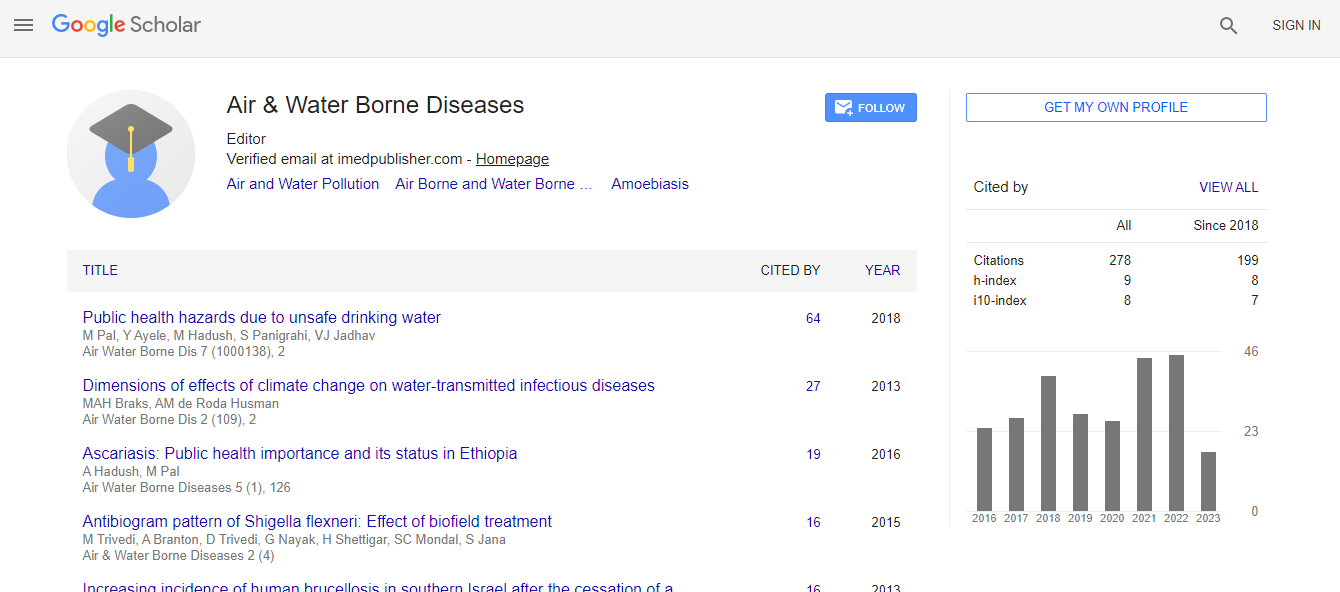Review Article
Ascariasis: Public Health Importance and its Status in Ethiopia
Angesom Hadush1 and Mahendra Pal2*1College of Veterinary Medicine, Samara University, P.O. Box 132, Samara, Ethiopia
2College of Veterinary Medicine, Addis Ababa University, P.O. Box 34, Debre Zeit, Ethiopia
- *Corresponding Author:
- Mahendra Pal
College of Veterinary Medicine
Addis Ababa University, P.O. Box 34
Debre Zeit, Ethiopia
Tel: +251 114 338 450
E-mail: palmahendra2@gmail.com
Received date: May 07, 2016; Accepted date: June 02, 2016; Published date: June 20, 2016
Citation: Hadush A, Pal M (2016) Ascariasis: Public Health Importance and its Status in EthiopiA. Air Water Borne Diseases 5:126. doi: 10.4172/2167- 7719.1000126
Copyright: © 2016 Hadush A, et al. This is an open-access article distributed under the terms of the Creative Commons Attribution License, which permits unrestricted use, distribution, and reproduction in any medium, provided the original author and source are credited.
Abstract
Waterborne diseases are a major public health problem in many countries of the world including Ethiopia. Waterborne diseases are caused by viruses, bacteria, protozoa, helminthes, and fungi. Currently, about 1.1 billion people in the world drink unsafe water, which is responsible for millions of cases of waterborne diseases. Ascariasis is among the several parasites which is widely prevalent helminthic disease of public health significance. It is commonly found in warm tropical and sub-tropical climates in Sub-Saharan Africa and Southeast Asia. It flourishes in areas with poor sanitation and crop irrigation by improperly treated wastewater. Severe ascariasis infections cause approximately, 60,000 deaths annually, mainly in children. It is transmitted through accidental ingestion of Ascaris eggs from contaminated water, food or soil. Among the Ascaris species, Ascaris lumbricoides and Ascaris suum are the parasitic nematode infections of humans and pigs with serious outcomes, respectively. Ascariasis is found in association with low personal hygiene, poor sanitation, and in places where human faeces are used as fertilizer. Clinical spectrum of disease varies from asymptomatic to nausea, vomiting, abdominal pain, pneumonia, and intestinal obstruction. Laboratory help is imperative to assist the clinical diagnosis. Treatment of adult worms can be done with albendazole, mebendazole, and pyrantel pamote. Public health department should improve the safety of the drinking water. Health education to the community, mainly the school children about the personal hygiene and environmental sanitation will be important in preventing the infection. Ascariasis caused by A. lumbricoides is found among children and adults in Ethiopia. Considering the importance of ascariasis from public health and economic perspective, further research on the development of safe, potent and cheap vaccine is emphasized. Moreover, comprehensive studies on zoonotic importance of A. suum should be planned particularly, in pig rearing countries

 Spanish
Spanish  Chinese
Chinese  Russian
Russian  German
German  French
French  Japanese
Japanese  Portuguese
Portuguese  Hindi
Hindi 